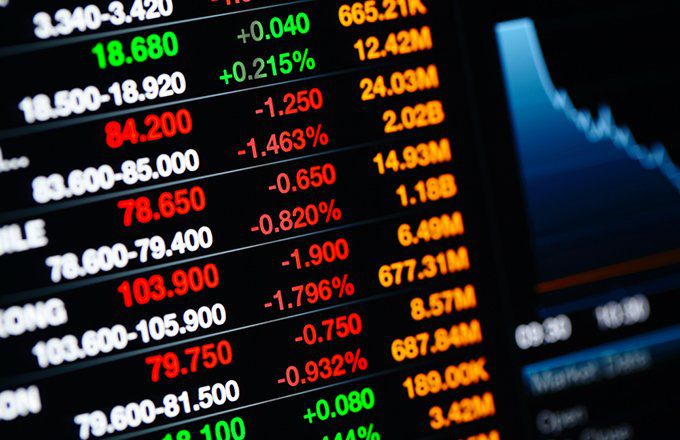[ad_1]
S&P 500 vs. Russell 2000 ETF: An Overview
In his book, A Random Walk Down Wall Street, the Princeton Professor Burton Malkiel writes that “a blindfolded monkey throwing darts at a newspaper’s financial pages could select a portfolio that would do just as well as one carefully selected by experts.” This idea is at the core of the debate between active vs. passive money management.
If you find yourself on the conservative end of the active vs. passive spectrum, then investing in exchange-traded funds (ETFs) may be one way to go. You may not beat the market, but you will certainly come close to matching it. In this article, we’ll focus on ETFs that track two of the more popular indexes: the S&P 500 and the Russell 2000.
S&P 500 ETF
The three most commonly traded ETFs that track the performance of the S&P 500 index are State Street’s SPDR S&P 500 ETF Trust (SPY), BlackRock’s iShares Core S&P 500 ETF (IVV), and Vanguard’s S&P 500 ETF (VOO). The common theme between all three is, of course, the index they track—the S&P 500. Many investors consider this index to be the pulse of the US equity market. It is calculated using the market capitalizations of the 500 largest US companies with stocks listed on the New York Stock Exchange or the NASDAQ Stock Market. Index constituents are selected by a committee, which takes into account criteria such as market capitalization, liquidity, financial viability, length of trading, etc.
The oldest and the most widely held of the three ETFs is SPY, with the value of net assets at $262.83 billion as of March 2019. Its fees of 0.09%, albeit negligible in a broader asset management context, are the highest among the three. This is reflective of its superior liquidity, with average daily trading volume of 30 to 60 times that of IVV and VOO.
All three ETFs slightly underperformed the S&P500 index over the last 10 years, with SPY returning the lowest of the three. This is to be expected since it has the highest expense ratio among the three ETFs and we are comparing it to the virtually frictionless S&P 500 Index.
* VOO fund inception date is September 9, 2010.
All the performance numbers represent NAV returns
SPY is also structurally different from IVV and VOO in that it is set up as a unit investment trust with restrictions on lending the underlying shares to other firms. Additionally, any dividends from SPY constituents for the period are collected and held in cash until distribution, whereas IVV and VOO allow for reinvestment of dividends.
Russell 2000 ETF
As the name suggests, Russell 2000 ETFs closely track the Russell 2000 Index, which combines 2000 of the small cap companies in the Russell universe of 3000 stocks. Both the S&P 500 and Russell 2000 indexes are market capitalization weighted. Unlike the S&P 500 index, however, the securities in the Russell 2000 index are not selected by a committee, but rather through a formula based on their market cap and current index membership. (For more, see: How the S&P 500 and Russell 2000 Indexes Differ.)
The most notable ETFs tracking the Russell 2000 index, in the order of their significance, are BlackRock’s iShares Russell 2000 ETF (IWM), Vanguard’s Russell 2000 ETF (VTWO), and Direxion Daily Small Cap Bill 3x Shares (TNA).
Here again, the higher liquidity of the iShares Russell 2000 ETF (IWM) seems to drive its higher expense ratio. Compared to the S&P 500 ETFs, however, all funds tracking the Russell 2000 index command higher fees despite a much lower overall liquidity. IWM is the heaviest traded Russell 2000 ETF, yet it trades at just one quarter of the SPDR S&P 500 ETF (SPY) volume. The higher fees of Russell 2000 ETFs are likely due to the increased management effort of periodically balancing a larger number of securities.
Russell 2000 ETFs may look more attractive than S&P 500 ETFs at the start of a bull market. The Russell 2000 constituents on average are bound to outperform their big brothers in the S&P 500 Index if the uptrend continues. The challenge is the volatility of their returns, so as an investor you may be in for a rough ride.
The Bottom Line
The advantages of ETFs are self-evident. In reality, very few active managers can beat the market, making ETFs an attractive investment for those who are content with matching the return on a wider market at a fraction of an active management cost. Investors have many ETFs to choose from based on the size, geographical location, or sector affiliation of companies in the index. Two of the more popular choices are the S&P 500 ETFs and Russell 2000 ETFs. Key distinctions between them are driven by the size of the companies in the index they track (i.e., large-cap for the S&P 500 and small-cap for the Russell 2000), the volatility of the underlying index, the method of constituent selection, and the fees they charge.
Key Takeaways:
- The S&P 500 and the Russell 2000 are two popular indexes.
- Many investors consider the S&P 500 to be the pulse of the US equity market.
- Russell 2000 ETFs closely track the Russell 2000 Index, which combines 2000 of the small cap companies in the Russell universe of 3000 stocks.
[ad_2]
Source link Google News

